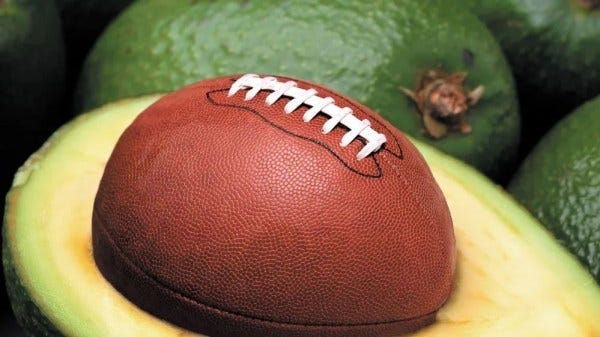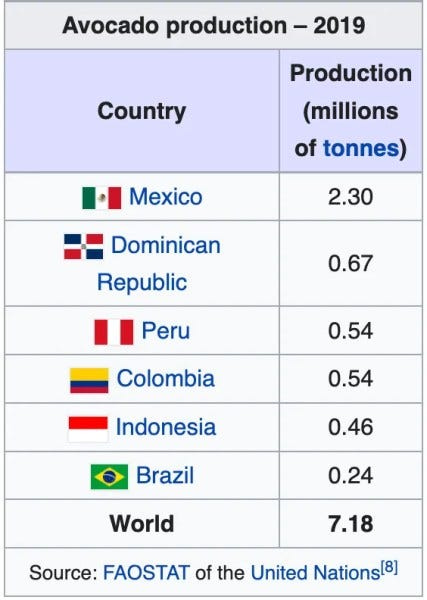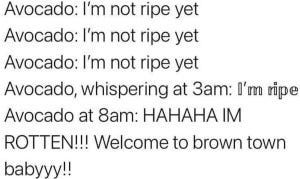Why are avocados, especially guacamole dip, considered a required food for Super Bowl Parties? What’s the background?
Californian Avocados
California, which has 60,000 acres of avocado orchards, has an avocado growing season running from March through August… not exactly friendly to the date of the Super Bowl. The popular “Hass” variety does not ripen until March. So, where do Super Bowl Avocados come from?
Mexican Avocados
In the run-up to the Super Bowl, 80–90% of all avocados shipped to the U.S. come from Mexico; the rest come from Chile. During the Super Bowl this year, American appetites crave over 330 million pounds of avocados, increasing 600% in the last three decades. Avocados’ history goes back thousands of years to Mesoamerica.
What Changed with Avocados?
In 1994, NAFTA (the North American Free Trade Agreement) opened the U.S. market to Mexican-grown avocados. The Mexican Avocado industry began promoting guacamole as a Super Bowl food.
By far, Mexico is the largest exporter to the U.S., mainly from the western Mexican state of Michoacán. Indeed, over 300 million pounds of avocados are shipped to the U.S. from Mexico in the first three months of the year. In 2022, Mexico reported that more than 1,400 trucks left Michoacán for the U.S. every week, or a truckload every six minutes.
This is just for the Super Bowl season. Overall, the U.S. consumed over 2.8 billion pounds of the favored Hass avocados last year.
The Most Popular Avocado
The cultivar was first grown in the U.S. by Rudolph Hass in 1926 in La Habra Heights, CA; he even patented his avocado in 1935. In the U.S., the Hass cultivar makes up 80% of the crop and 95% of the California crop. Hass’ original tree spawned millions of others, and it is now grown elsewhere in the world, dwarfing the U.S. crop.
Nevertheless, avocado is the official fruit of the state of California.
National Avocado Day
Super Bowl Sunday is not National Avocado Day, despite causing a spike in consumption. That’s not until July 31. Think of it as celebrating early.
Avocado, the secret identity of Super Food
Avocados have gotten considerable scientific study due in no small part to avocado marketing organizations wanting to change perspectives about “anti-fat” diets. Avocados have:
Heart-healthy monounsaturated fat, combatting insulin resistance
Omega 3 fatty acids, fighting Alzheimer’s
Vitamins C, E, and K repair cellular damage
Face masks for beauty, going back to the ancient Aztecs
My mother served me California avocados in salads back in the 1960s. Avocados are now used on toast and in the popular sushi called California Roll. It’s an Olympic treat; you get a bit of California, Japan, and Mexico.
Avocado Isn’t a Vegetable?
Surprisingly, it’s a fruit, or more specifically, a berry with a single large seed (pit).
Previous name for Avocado
Until the 1920s, the avocado was called the alligator pear, no doubt because of the skin’s texture. The California Avocado Growers’ Exchange complained about it in 1927, and it subsequently became known as the avocado pear or just avocado.
Avocado’s Delicate Ripeness
Though it is a fruit, it is not sweet; it’s more buttery. But like a pear, it has a particular date when it becomes “just right” for eating.
From a Facebook post:
Bill Petro, your friendly neighborhood historian
billpetro.com
Subscribe to have future articles delivered to your email. If you enjoyed this article, please consider leaving a comment.








